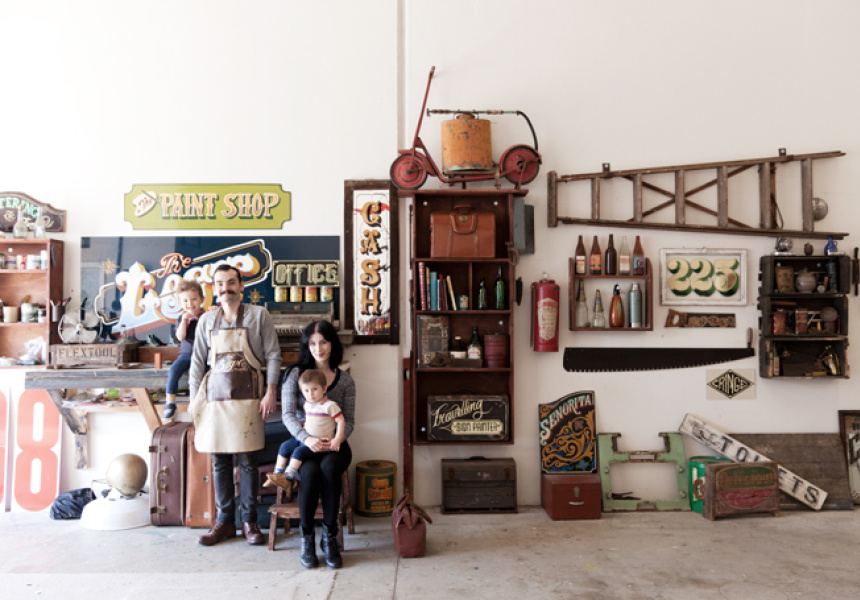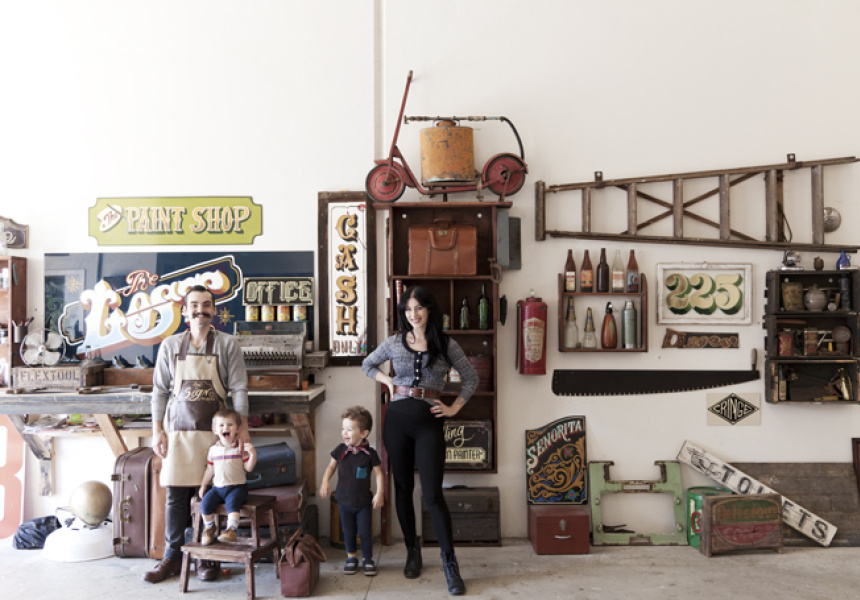A lost art is a crying shame. From baking to carpentry, we see specialised trades fall to mechanisation and mass production, quietly fading away with no sons or daughters left to carry on the family legacy.
However, there exists a faint light of revival many fields, with singular artisans rediscovering their tools and creating in the same vein as their forefathers.
Rewind 40 years and you’d find a metropolitan and suburban landscape that communicated with people via hand-painted signs. Logos of the parochial beers flanked pubs; consumer brand imagery plastered its way across the facades of tall city buildings with its classic, timeless livery. The ghosts of these handcrafted signs – flaking and faded on old factories and corner milk bars – exist as a memory of simpler times.
Never miss a Melbourne moment. Make sure you're subscribed to our newsletter today.
SUBSCRIBE NOWEnter TJ Guzzardi. With a flat cap and groomed moustache, he might be the picture of an archetypal signwriter 1950s London. With no formal training, Guzzardi honed his craft simply through years of practice.
He first picked up a brush at 15, pinstriping panels in the backyard of his dad’s hotrod shop. Born into a subculture, he found himself instinctively following a path that represented his family’s passions.
And now he has his own little family. His wife L’Amour is a burlesque dancer, costume designer and mother to two of the coolest boys on the block, and together the family spends most of their time in their Tullamarine studio. The space is filled with Guzzardi’s work and plays host to an array of curious knick-knacks.
Drop into his studio any day of the week and there’s a fresh batch of coupes, choppers, roadsters and bobbers waiting to be marked with the Guzzardi touch. Indeed, his meticulous pinstriping adorns some of the baddest old-school rides around. In addition to his graft in the garage, his work is now popping up from coast to coast, adorning restaurants, bars, tattoo parlours and retail shops.
Put simply, people are turning back to this lost art. Perhaps it’s Guzzardi’s ability to infuse this time-forgotten trade with a modern sensibility that is responsible for his success. Social media plays a large part in garnering an appreciative audience that understands his work as an art form rather than simply a means of communication. Guzzardi admits that the majority of his work comes from word of mouth, “and heaps of that is generated through Instagram”.
“People have already seen loads of my work before they call me,” he says.
I have such respect for Guzzardi’s art that I’ve contracted him to do work for me at The Beaufort almost every week since we met. I’m not alone. His work for the crew from Chingon in Richmond has expanded from their interior elements to the entire exterior of their new taco truck. When visiting Sydney, he’s obliged to stop by Porteno and Bodega to work on their signage or add a custom touch to Ben Milgate’s Valiant Safari Wagon.
Nonetheless, he’s humble about his profession. “I guess back in the day sign painting was just another trade,” he says. “Stickers weren't around, but these days they’re everywhere. So I consider that what I do is artistic because it’s unique.”
Guzzardi is in the midst of planning his own art show, set to launch later this year. But ultimately his ambitions remain modest. Put simply, he hopes “to do what I love for the rest of my life and to do it with the people I love around me”. He hopes his boys might be inspired to pick up a brush too.
tjpinstriping.blogspot.com
Instagram: @tjguzzardi



